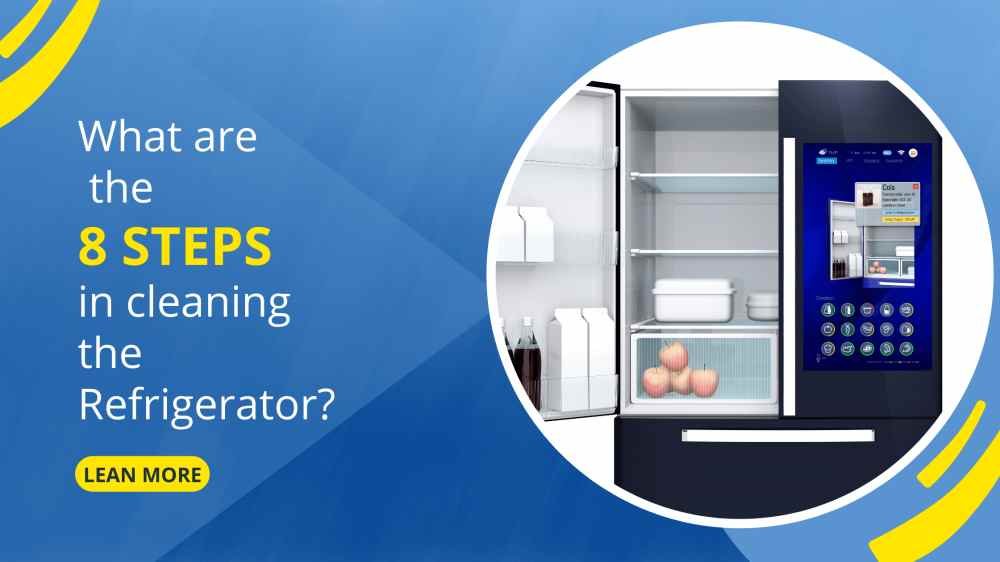Cleaning a refrigerator is part of preparing the delectable meals within. A refrigerator is one of those (much-loved) large equipment that is so simple to think is spotless on the inside when the exterior isn’t too terrible, the door concealing many sins. A commercial refrigerator may be a significant investment that can make or destroy a business or restaurant. If the Refrigerator works normally, you and your business may be in danger if there are any complications.
For example, a restaurant without an available walk-in freezer or reaching a cooler may need to close, throw out any perishable goods that may have gone bad, and pay a qualified technician to come in and perform any required repairs. This may be an expensive experience. Before you can re-organize your Refrigerator. A refrigerator must be maintained clean for various reasons,” explains Meg Roberts, president of cleaning firm Molly Maid. A clean refrigerator will keep food fresher for longer.” However, cross-contamination is possible due to the moisture in the fridge. Thus, measures must be taken. Also, a full refrigerator implies that certain goods are tucked away, leading food to waste.
Also Read: All You Need to Know About Best DIY Home Improvement
Seven Steps to Clean your Refrigerator
A clean fridge not only looks healthier but will also function more efficiently and can eventually save you money. You should first clean it out. Here’s how to clean your refrigerator step by step.
Unplug your Refrigeration Units
The first thing you should do to avoid electrocution is to disconnect your Refrigerator. It’s a quick and simple action, but it’s critical for reducing workplace injuries after unplugging your refrigeration. Next, remove all your food from your fridge and freezer and put it into coolers to keep it cold while cleaning your fridge and freezer out.
Remove the Shelves and Drawers
The next step is to remove all of the Refrigerator’s shelves and drawers and wash them in hot, soapy water. Glass components in your Refrigerator must be allowed to come to room temperature before being run under hot water since they can break easily. While cleaning your fridge, store them somewhere to dry (inside or outdoors).
Fully Wipe Down the interior of the Refrigerator
To fully clean your commercial Refrigerator, fill a pail with warm, soapy water and use your preferred sponge. Microfiber towels and mitts are ideal for washing out every inch of your Refrigerator and stopping messes that have been collected since the last cleaning.
If you’re having difficulties reaching filth or stuck-on stains in tight areas, use a toothbrush since the strands are flexible and powerful, allowing you to get into small areas and rub away the dirt after cleaning the interior of your Refrigerator. Flush with clean water. You might need commercial refrigeration repair if you don’t follow this step.
Throw away any expired or Moldy Food
In a big refrigerator, perishables can easily become lost in the mix by being pushed to the back under other products. It’s not worth making a consumer suffer to keep something that doesn’t appear to be in good condition.
Bottles and jars that have already been opened should also be discarded (unless properly labeled with the date and time of their opening). “When in doubt, toss it away,” as the saying goes. Any other food or products you haven’t used in months (or don’t plan on using in the next few weeks) should also be thrown away.
Disinfect with a Sanitizer
Bacteria and mold may grow in a refrigerator over time, so it’s essential to disinfect surfaces using a sanitizer. Because you’ll be putting goods back into the refrigerator units, use a food-safe sanitizer. You don’t need to go wild with sanitizing because you’ve already cleaned inside. However, a small amount goes a long way.
Vacuum the Condenser and Coils
Dust and debris reduce the power generated in your refrigeration unit’s condenser and refrigeration coils by blocking the air intake. Additionally, dust and mud can build up in your freezer over time, blocking the air intake. Consequently, your condenser and refrigerator coils will need more energy to suck in air and maintain your refrigerator cool, resulting in a less-efficient refrigerator and a higher utility bill. You may fix this problem by routinely wiping the dust from your refrigerator coils. Start by removing the protective grill on the top or bottom of your device.
Make sure the fridge is clean underneath and on top as well
It is just as important to keep the space surrounding your refrigeration units clean as it is to maintain the equipment itself. Mop the floor beneath and around the Refrigerator thoroughly. If your troops have casters, move them away from the wall so you can access the walls and floor behind and beneath the unit. Don’t forget to dust the unit’s top as well.
Finish Up
Now that your fridge has been cleaned, the next step is to re-stock it with food and re-turn the electricity when putting your food back in the Refrigerator. Finally, remember to clean your Refrigerator regularly (particularly the door gaskets), as this will help it work more efficiently and for a longer time. You may need commercial refrigeration services if you do not follow these steps.

